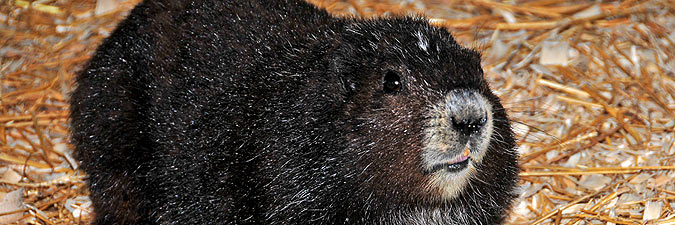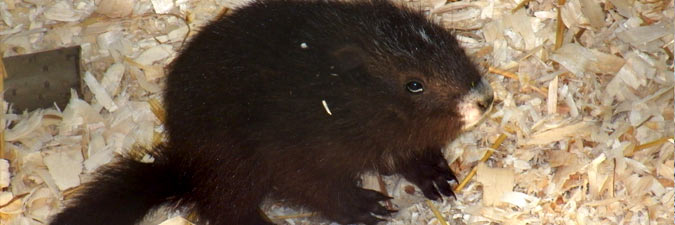Vancouver Island Marmot Captive Breeding
One of only six mammals endemic to Canada, the Vancouver Island Marmot (Marmota vancouverensis) is a critically endangered species found only on Vancouver Island, British Columbia in the wild. These close relatives of the groundhog (Marmota monax) inhabit an isolated and fairly specific habitat: alpine meadows at high elevations. Over the last 40 years, the complicated ramifications of habitat alteration have steadily reduced the number of wild marmots. In 2003, the population reached a critical level as less than 30 individuals remained in the wild. This made the Vancouver Island marmot North America's most endangered mammal.

In 1997, the Vancouver Island Marmot Recovery Team determined that a captive breeding and reintroduction program was the only viable solution to save the species from extinction. That year, the Toronto Zoo received six wild-caught marmots and the program has since expanded to include two other current institutions, the Calgary Zoo and the Tony Barrett Mount Washington Marmot Breeding Center. Many initiatives have been undertaken to identify and restore habitat for the species and also to mitigate the disturbance of these areas. Two logging companies on Vancouver Island have been active in marmot recovery projects and educational outreach campaigns have been launched to raise awareness and funds for reintroduction efforts.

Here at the zoo breeding pairs of marmots are kept out of the public eye and undergo minimal human-animal contact to keep the animals’ conditions as natural as possible. Our marmots are provided with multiple enclosures and furnished to allow for natural behaviours like nesting, digging, gnawing and watching for predators. Breeding takes place shortly after the marmots awake from hibernation in March or April, and gestation lasts only 30 days, though not every pair breeds every year. Baby marmots, called pups, usually come in litters of 3-4 animals and remain hidden in the nests made by their parents in sheltered nest boxes for the first few weeks of their lives. Keepers rely on hearing the squeaks the marmots communicating with their mothers’ to signal which pairs have successfully bred, as often the pups are nearly a month old before they begin exploring beyond their nest boxes where the keepers can see them. The young grow swiftly through the summer and by the fall are independent enough to be sent to Vancouver Island where they make the final preparations for their first over-winter hibernation and release into the wild.

With the great success of the captive breeding program, the plan is to maximize the number of marmots released each year. Survival rates are encouraging as captive-born animals have survived several hibernation periods and are known to be reproducing in the wild. Over 200 wild Vancouver Island marmots now occupy dozens of mountain meadows, some where the marmots had been historically wiped out. The program goal is to have between 400 and 600 marmots living in the wild in three stable metapopulations. V.I. Marmots still face challenges with limited habitat available, large dispersal distances between suitable habitat patches, increased predation, and high death rates among youngsters hibernating their first winter. Over time climate change is likely to play an increasing role in limiting optimal marmot habitat as temperatures on the mountainside affect both plant growing seasons, altering the make-up of existing plant communities and habitats, and the marmots’ hibernation patterns.
For more information visit https://marmots.org/
